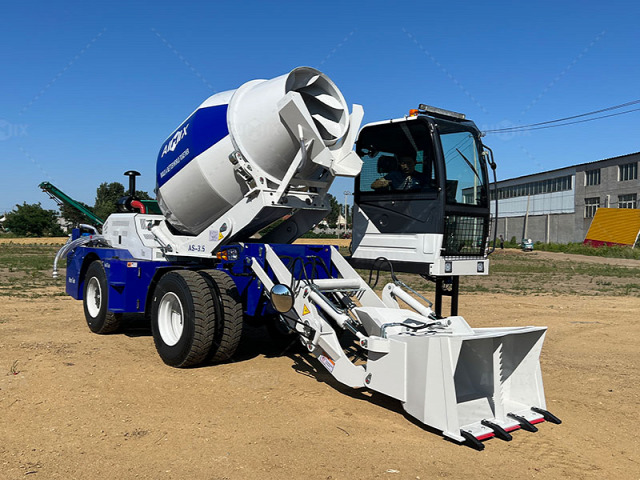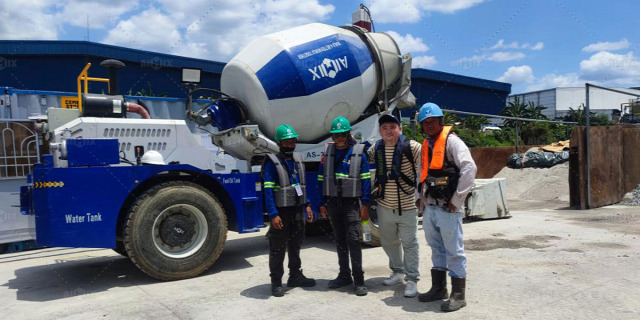Urban construction in Indonesia presents unique challenges, particularly when it comes to space. The bustling cities, with their narrow streets and densely packed infrastructure, make maneuvering large construction equipment a daunting task. This is where the self loading concrete mixer in Indonesia shines. Its compact design, combined with advanced functionality, makes it an indispensable tool in urban environments where space is at a premium. As cities continue to grow, the demand for efficient, space-saving construction solutions like the self-loading concrete mixer is on the rise.

Compact Design and Maneuverability
Adaptability in Tight Spaces
One of the primary advantages of a self-loading concrete mixer in urban construction is its compact design. Traditional concrete mixers require ample space for operation, often causing logistical headaches in tightly packed urban settings. However, self-loading mixers are designed to be significantly smaller without compromising on their operational capabilities. This allows them to navigate through narrow streets, tight alleys, and congested job sites with ease. The agility of these mixers is further enhanced by their all-wheel drive and four-wheel steering, which provide superior maneuverability. This is particularly beneficial in Indonesian cities, where construction sites are often surrounded by existing structures, leaving little room for large vehicles to operate. The AIMIX self loading concrete mixer can easily reach these confined spaces, reducing the need for additional equipment and personnel to transport and pour concrete.
Operational Efficiency in Urban Settings
In addition to their compactness, self-loading concrete mixers offer operational efficiency that is crucial in urban environments. These machines combine several functions into one, including loading, mixing, and discharging concrete. This all-in-one capability eliminates the need for separate machines, further reducing the space required on site. By consolidating these processes, self-loading mixers also minimize the time spent on each task, allowing for faster project completion. Moreover, the ability of these mixers to produce concrete on-demand ensures that construction teams have a consistent supply of fresh concrete, eliminating delays caused by waiting for deliveries from external suppliers. In the context of urban construction, where time is often of the essence due to traffic restrictions and noise ordinances, the efficiency provided by self-loading mixers can make a significant difference in project timelines.

Reducing Traffic and Environmental Impact
Minimizing Transportation Needs
Urban construction projects are often subject to strict regulations regarding traffic and environmental impact. The use of self-loading concrete mixers helps address these concerns by minimizing the need for multiple vehicles on the road. Traditional construction projects might require separate trucks for transporting materials, mixers, and concrete pumps, leading to increased traffic congestion and higher fuel consumption. Self-loading mixers, on the other hand, can load raw materials directly into the mixing drum, reducing the need for additional transport vehicles. This not only decreases traffic disruptions but also lowers the project’s carbon footprint. In a country like Indonesia, where environmental sustainability is becoming increasingly important, the reduced transportation requirements of self-loading mixers are a notable advantage.
Noise and Emission Control
Another critical factor in urban construction is managing noise and emissions, especially in residential areas. Self-loading concrete mixers are often equipped with modern engines that meet stringent emission standards, making them more environmentally friendly compared to older, less efficient models. Additionally, the compact size and efficient operation of these mixers contribute to lower noise levels on construction sites. By reducing both noise pollution and emissions, self-loading concrete mixers help ensure that urban construction projects are less disruptive to surrounding communities. This not only facilitates smoother project execution but also fosters better relationships between construction companies and local residents.
Conclusion
In the urban construction landscape of Indonesia, where space constraints and environmental concerns are ever-present, the self-loading concrete mixer offers a practical and efficient solution. Its compact design, operational efficiency, and reduced environmental impact make it an ideal choice for navigating the challenges of urban construction. As Indonesian cities continue to expand, the role of self-loading concrete mixers in overcoming these constraints will only become more vital, driving progress while respecting the limitations of urban environments.

